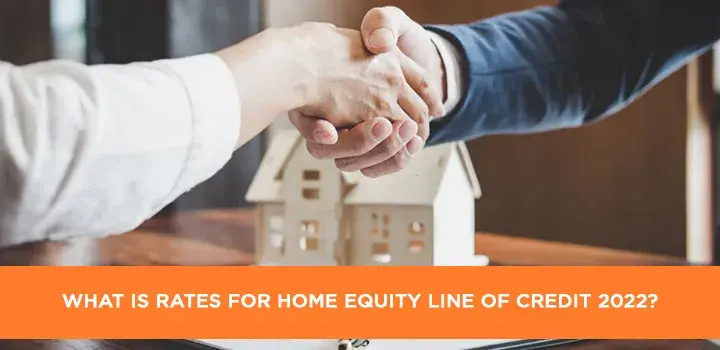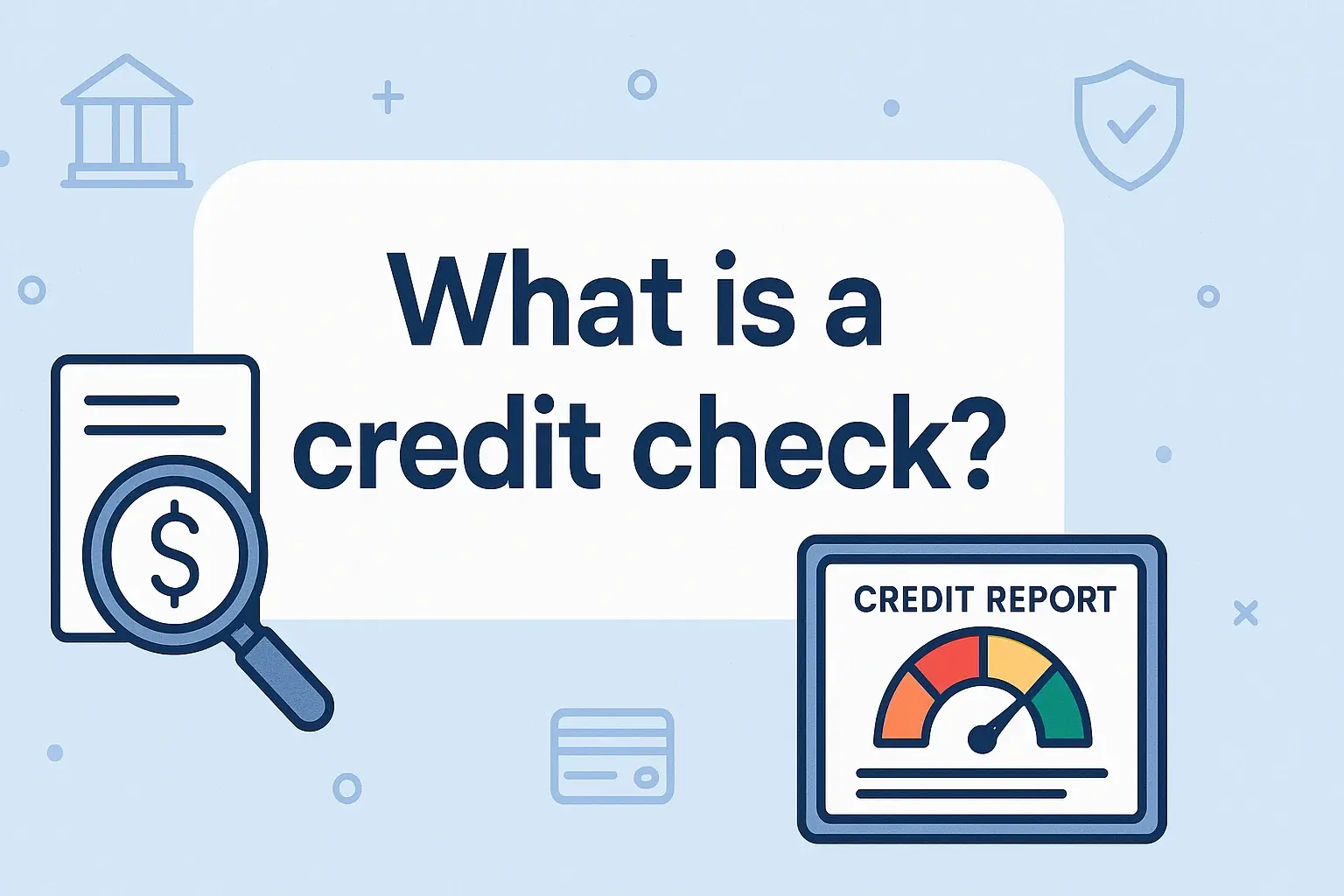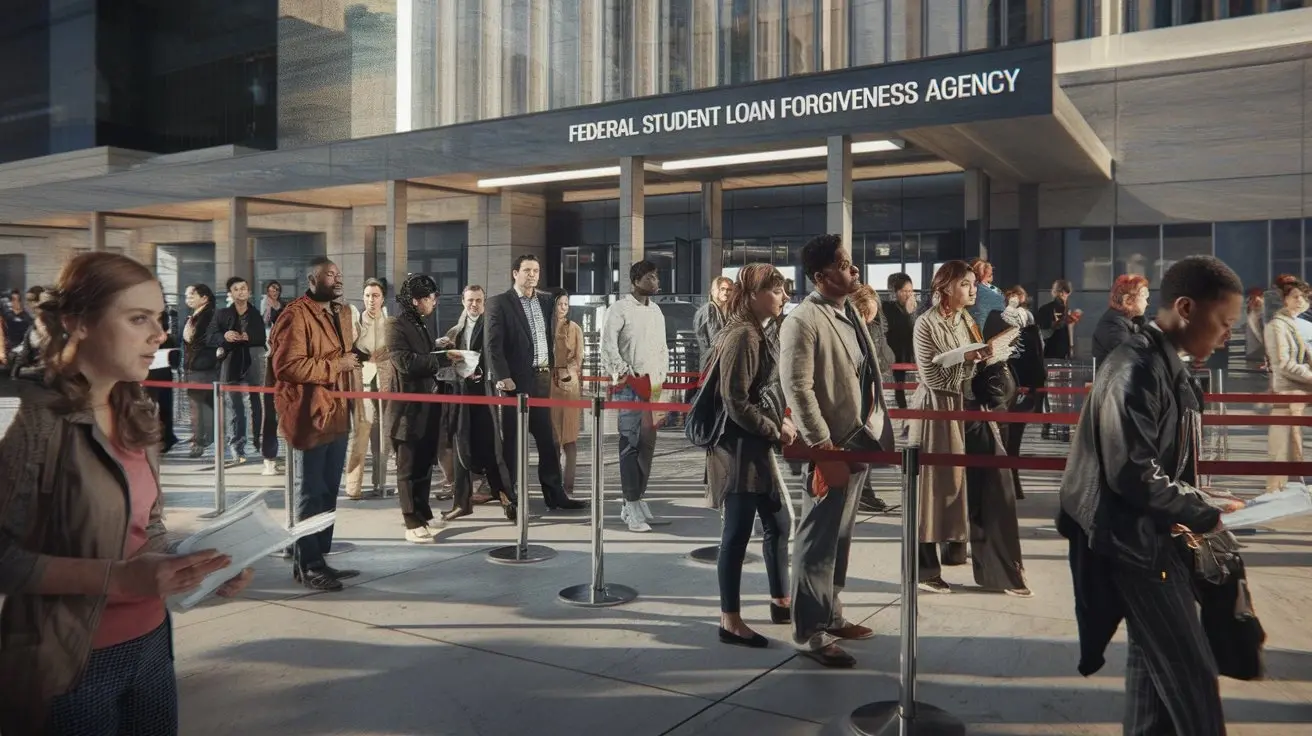-
Posted on: 21 Dec 2022

-
Understanding current home equity line of credit (HELOC) rates for 2025 is crucial for homeowners looking to leverage their home's equity. This guide provides a comprehensive overview of what influences HELOC rates, current market trends, and how to secure the best possible terms.
Understanding HELOC Rates in 2025
Homeowners often seek a Home Equity Line of Credit (HELOC) to access funds for various purposes, from home renovations to debt consolidation. A critical aspect of securing a HELOC is understanding its interest rate. In 2025, HELOC rates are influenced by a dynamic interplay of economic factors, individual borrower profiles, and lender policies. This comprehensive guide aims to demystify what constitutes HELOC rates, the prevailing trends for 2025, and actionable strategies for homeowners to obtain the most favorable terms. By grasping these elements, you can make informed decisions when leveraging your home's equity.
Key Factors Influencing HELOC Rates
The interest rate you'll be offered for a Home Equity Line of Credit isn't arbitrary. Several fundamental factors converge to determine the specific rate presented to you. Understanding these components is the first step in deciphering what rates for a home equity line of credit in 2025 might look like for your unique situation.
The Prime Rate
At the core of most HELOC interest rates is the Prime Rate. This benchmark rate is closely tied to the Federal Reserve's federal funds rate. When the Federal Reserve adjusts its target rate, the Prime Rate typically follows suit almost immediately. For instance, if the Fed raises its target rate by 0.25%, major banks will likely increase their Prime Rate by the same margin. This foundational rate is a significant indicator of the overall cost of borrowing in the economy. As of early 2025, the Prime Rate has seen some fluctuations due to ongoing economic adjustments, making it a dynamic element in HELOC pricing.
Margin on Top of Prime
While the Prime Rate sets the baseline, lenders add a "margin" to this rate to determine your actual HELOC interest rate. This margin is essentially the lender's profit and accounts for their risk in lending to you. The margin is not fixed across all borrowers; it varies based on several individual factors, which we will discuss shortly. A typical margin might range from 0.5% to 3% or more above the Prime Rate. Therefore, your HELOC rate will be calculated as: HELOC Rate = Prime Rate + Margin. For example, if the Prime Rate is 5.5% and your lender assigns a margin of 1.5%, your HELOC rate would be 7.0%.
Your Creditworthiness
Your credit score and overall credit history are paramount in determining the margin a lender will assign. Borrowers with excellent credit scores (typically 740 and above) are seen as lower risk and will generally qualify for lower margins, thus securing lower HELOC rates. Conversely, individuals with lower credit scores may face higher margins and, consequently, higher interest rates. Lenders scrutinize your credit report for payment history, outstanding debt, length of credit history, and the types of credit used. A strong financial track record signals reliability and often translates to more favorable borrowing terms in 2025.
Loan-to-Value (LTV) Ratio
The Loan-to-Value (LTV) ratio compares the amount you wish to borrow against the appraised value of your home. Lenders typically require a certain amount of equity in your home, meaning the home's value must significantly exceed the total debt secured by it. A common LTV threshold for HELOCs is 80% or 85% of the home's value. If your home is appraised at $500,000 and you have an existing mortgage of $200,000, your available equity is $300,000. If you want to borrow $100,000, your new total debt would be $300,000 ($200,000 existing + $100,000 HELOC). The LTV would be $300,000 / $500,000 = 60%. A lower LTV generally indicates less risk for the lender and can lead to a more attractive interest rate. Conversely, a higher LTV means you have less equity buffer, increasing the lender's risk and potentially leading to a higher margin.
Broader Economic Conditions
The overall health of the economy plays a significant role in interest rate environments. Factors such as inflation, unemployment rates, and anticipated future economic growth influence the Federal Reserve's monetary policy decisions, which in turn affect the Prime Rate. In 2025, ongoing efforts to manage inflation and ensure economic stability continue to shape the interest rate landscape. When inflation is high, central banks tend to raise interest rates to cool down the economy, which would likely lead to higher HELOC rates. Conversely, during economic downturns, rates may decrease to stimulate borrowing and spending.
Lender-Specific Policies
Beyond the general market factors, each financial institution has its own internal policies, risk tolerance, and strategic goals. Some lenders might be more aggressive in certain markets or product offerings, leading them to offer more competitive rates to attract borrowers. Others may have stricter lending criteria or higher profit margins. It's also worth noting that some lenders may offer relationship discounts if you have other accounts, such as checking, savings, or investment accounts, with them. These lender-specific nuances highlight the importance of shopping around.
Current HELOC Rate Trends for 2025
Navigating the current financial climate requires an understanding of the prevailing trends that are shaping HELOC rates in 2025. These trends are a composite of macroeconomic forces, lender competition, and evolving consumer demand.
Interest Rate Environment
The interest rate environment in 2025 continues to be influenced by the Federal Reserve's monetary policy. After a period of significant rate hikes to combat inflation, there's a delicate balance being struck. While inflation has shown signs of cooling, the Fed remains vigilant. This means that while the pace of rate increases may have slowed or even paused, rates are likely to remain at elevated levels compared to the historically low rates seen in the preceding years. Consequently, HELOC rates in 2025 are generally higher than they were a few years ago, reflecting the higher Prime Rate benchmark. Homeowners should anticipate that rates will continue to be sensitive to any shifts in the Fed's stance on inflation and economic growth.
Competitive Lending Landscape
The market for home equity products remains competitive in 2025. Lenders are actively seeking to attract borrowers, particularly those with strong credit profiles. This competition can manifest in various ways, including slightly lower margins, reduced fees, or promotional offers. However, it's important to remember that the fundamental drivers of rates (Prime Rate, creditworthiness, LTV) still hold significant sway. While lenders compete, they must also manage their own risk and profitability. This means that while you might find a slightly better deal by shopping around, drastic differences in advertised rates are less common unless specific promotional periods are active. The competition primarily benefits borrowers who are well-prepared and actively compare offers.
Average HELOC Rates in 2025
Pinpointing an exact average HELOC rate for 2025 is challenging as it fluctuates daily and varies significantly by lender and borrower profile. However, based on market data and expert projections from early 2025, typical HELOC rates are generally observed to be in the range of 7.5% to 11.5%. This range reflects the Prime Rate (which has been hovering around 5.5% to 6.5% in early 2025) plus varying margins. For example, a borrower with excellent credit and a low LTV might secure a rate closer to 7.5% (e.g., Prime Rate of 6.0% + 1.5% margin), while someone with a less stellar credit profile or higher LTV might see rates in the 10% to 11.5% range or even higher.
It's crucial to understand that these are averages and your specific rate could be outside this range. Fixed-rate options, if available for HELOCs, often carry a slightly higher initial rate than the variable rate component. For the most accurate and personalized rate information, it is always recommended to obtain quotes directly from multiple lenders.
How to Find the Best HELOC Rates
Securing the most advantageous interest rate for your Home Equity Line of Credit requires a proactive and informed approach. It's not simply about accepting the first offer you receive. By following a strategic process, you can significantly improve your chances of finding competitive rates and terms in 2025.
Check Your Credit Score
Before you even begin applying, your first step should be to obtain your credit reports and scores from the major credit bureaus (Equifax, Experian, and TransUnion). Most lenders will use your FICO score or VantageScore. Knowing your score allows you to understand your borrowing power and identify any potential errors that could be negatively impacting your credit. If your score is lower than you'd like, consider taking steps to improve it before applying. This might involve paying down existing debt, ensuring all payments are made on time, and avoiding opening new credit accounts unnecessarily. A higher credit score is one of the most powerful tools you have for negotiating a lower interest rate.
Calculate Your Equity
You need to know how much equity you have in your home to determine how much you can borrow and to understand your LTV ratio. Your home equity is calculated by subtracting your outstanding mortgage balance from your home's current market value. For example, if your home is valued at $600,000 and you owe $250,000 on your mortgage, you have $350,000 in equity. Most lenders will allow you to borrow up to 80% or 85% of your home's value, which includes your existing mortgage balance and the new HELOC. So, in this example, 85% of $600,000 is $510,000. Subtracting your existing mortgage of $250,000 leaves $260,000 as the maximum you could potentially borrow via a HELOC. Understanding this figure helps you set realistic borrowing expectations and present a clear picture to lenders.
Shop Around with Multiple Lenders
This is perhaps the most critical step in securing the best rate. Do not limit yourself to your current bank or credit union. Explore options from national banks, local banks, credit unions, and online lenders. Each lender may have different underwriting standards, risk appetites, and promotional offers. When comparing, pay close attention to the advertised APR (Annual Percentage Rate), which includes the interest rate and any associated fees. Many lenders allow you to get pre-qualified without a hard credit inquiry, which won't impact your credit score. This allows you to get a preliminary idea of the rates you might qualify for from different institutions.
Compare Fees and Terms
Interest rate is a major factor, but it's not the only cost associated with a HELOC. Lenders often charge various fees, which can significantly impact the overall cost of borrowing. Common fees include:
- Application Fees: Charged to process your loan application.
- Appraisal Fees: To determine the market value of your home.
- Title Fees: For title search and insurance.
- Origination Fees: A percentage of the loan amount.
- Annual Fees: Some HELOCs have an annual maintenance fee.
- Transaction Fees: For drawing funds from the line.
- Early Closure Fees: If you close the HELOC before a certain period.
Negotiate Your Rate
Once you have gathered quotes from several lenders, you may have some leverage to negotiate. If you have a strong credit profile and have received competitive offers, don't hesitate to ask lenders if they can match or beat a rival's rate or reduce certain fees. Sometimes, lenders are willing to adjust their margins or waive specific fees to win your business, especially if you are a desirable borrower. Highlight the best offers you've received and see if they can improve their terms. Even a small reduction in the interest rate or fees can save you a significant amount of money over the life of the loan.
HELOC vs. Home Equity Loan Rates: A Comparison
When considering accessing your home's equity, homeowners often face a choice between a Home Equity Line of Credit (HELOC) and a Home Equity Loan. While both leverage your home's equity, their rate structures and how they function differ significantly, impacting which might be more suitable and cost-effective for your needs.
Home Equity Loans typically offer a fixed interest rate for the life of the loan. This means your monthly payments for principal and interest remain the same throughout the repayment period. This predictability is a major advantage for borrowers who prefer stable, predictable expenses. The interest rates on home equity loans are often based on market conditions at the time of application and are generally comparable to, or slightly higher than, the initial variable rates offered on HELOCs. For instance, in early 2025, fixed rates for home equity loans might range from 7.0% to 10.5%.
HELOCs, on the other hand, are characterized by a variable interest rate. This rate is typically tied to the Prime Rate plus a margin. During the draw period, you usually only pay interest on the amount you've borrowed. As the Prime Rate fluctuates, so does your HELOC interest rate and your monthly payment. This variability can be a double-edged sword: if rates fall, your payments decrease; if rates rise, your payments increase. In 2025, with interest rates generally higher and subject to potential changes, the variable nature of HELOCs requires careful consideration of potential payment increases. The initial rates might be slightly lower than fixed-rate home equity loans, but the risk of future increases is inherent.
Key Differences in Rates and Terms (Illustrative 2025 Data):
Feature Home Equity Line of Credit (HELOC) Home Equity Loan Interest Rate Type Variable (tied to Prime Rate + margin) Fixed Typical Rate Range (Early 2025) 7.5% - 11.5% (variable) 7.0% - 10.5% (fixed) Payment Structure Interest-only during draw period, then P&I; payments can change Principal and Interest (P&I); consistent payments Best For Ongoing or unpredictable expenses, home renovations, debt consolidation where flexibility is needed and borrower can tolerate rate fluctuations. Large, one-time expenses (e.g., major renovation, education costs), borrowers who prioritize payment stability. When comparing rates, it's essential to consider not just the advertised percentage but also the total cost over the loan term, factoring in fees and potential rate changes for HELOCs. For someone prioritizing budget certainty in 2025, a home equity loan might offer more peace of mind, even if its initial rate is slightly higher.
Understanding Variable vs. Fixed Rates for HELOCs
While most Home Equity Lines of Credit (HELOCs) are inherently variable-rate products, some lenders in 2025 are beginning to offer hybrid options or the ability to convert portions of the balance to a fixed rate. Understanding these nuances is critical for managing your borrowing costs effectively.
Standard Variable Rate HELOCs: This is the most common type. Your interest rate is directly linked to a benchmark index, most often the Prime Rate, plus a predetermined margin. As the Prime Rate fluctuates (which is influenced by the Federal Reserve's monetary policy), your HELOC rate will adjust accordingly, typically on a monthly basis. This means your minimum monthly payment can change. If interest rates rise, your payments will increase, potentially significantly if the increases are substantial. Conversely, if rates fall, your payments will decrease.
Hybrid HELOCs (Less Common): Some lenders might offer a HELOC with an initial fixed-rate period, followed by a variable rate. For example, you might have a HELOC with a fixed rate of 6.5% for the first 12 months, after which it converts to the standard Prime Rate + margin. These can be attractive for borrowers who anticipate needing funds over a year and want initial payment stability, but they still carry the risk of future rate increases.
Fixed-Rate Conversion Options: A growing number of lenders are providing borrowers with the ability to convert a portion or all of their outstanding HELOC balance to a fixed interest rate at specific times. This is a valuable feature for managing risk. If you've drawn a large sum and are concerned about rising interest rates, you might be able to lock in a fixed rate on that specific amount, turning that portion of your line of credit into something akin to a mini-home equity loan. The fixed rates offered through these conversion options in 2025 are typically higher than the prevailing variable rate but offer protection against future rate hikes. For example, a lender might offer a fixed rate of 8.0% to convert a portion of your balance, while the variable rate remains at 7.5%.
Considerations for 2025: Given the current interest rate environment, where rates are elevated and subject to potential future shifts, borrowers should carefully consider the implications of variable rates. If you anticipate needing to draw funds over an extended period and are concerned about payment volatility, exploring lenders who offer fixed-rate conversion options can provide valuable flexibility and risk mitigation. Always inquire about the specific terms, rates, and any associated fees for these fixed-rate conversion features when comparing HELOC offers.
What to Expect During the HELOC Application Process
Applying for a Home Equity Line of Credit (HELOC) involves a structured process, similar in many ways to applying for a mortgage or other significant loan. Understanding these steps can help you prepare and navigate the process smoothly in 2025.
1. Pre-qualification and Application: You'll start by completing a loan application. This will require detailed personal and financial information, including your income, employment history, assets, and liabilities. You'll also provide details about your home, including its address, estimated value, and your current mortgage information. Many lenders offer online applications, making this step convenient. During this phase, the lender will likely perform a soft credit check to provide you with a preliminary estimate of your borrowing capacity and potential rate.
2. Underwriting and Verification: Once you submit your application, the lender's underwriter will review all the information provided. They will verify your income and employment by requesting pay stubs, tax returns, and W-2s. They will also verify your assets by requesting bank statements and other financial account details. Your credit report will undergo a hard inquiry at this stage, which can slightly impact your credit score.
3. Home Appraisal: A crucial step is the home appraisal. The lender will order an independent appraisal of your property to determine its current market value. This valuation is essential for calculating your Loan-to-Value (LTV) ratio and determining the maximum amount you can borrow. The cost of the appraisal is typically borne by the borrower, either paid upfront or rolled into the loan fees.
4. Loan Approval and Disclosure: If your application is approved, the lender will issue a commitment letter outlining the loan terms, including the credit limit, interest rate (and how it's determined), draw period, repayment period, and any fees. You will also receive official loan disclosure documents that detail all the terms and conditions of the HELOC. It is imperative to read these documents carefully and ask questions about anything you don't understand.
5. Closing: The final step is the closing. You will meet with a representative from the lender or a title company to sign all the necessary loan documents. You'll typically need to bring a valid photo ID. Once all documents are signed and any initial fees are paid, the HELOC will be established, and you will be able to access funds from your line of credit, usually by writing checks or transferring funds electronically.
The entire process, from application to closing, can take anywhere from a few weeks to a couple of months, depending on the lender, the accuracy of the information provided, and the efficiency of the appraisal process. Being prepared with all necessary documentation can significantly expedite the timeline.
Risks and Considerations with HELOCs
While a HELOC can be a valuable financial tool, it's essential to approach it with a clear understanding of the associated risks and considerations. Failing to do so can lead to financial hardship.
Risk of Foreclosure: The most significant risk is that your home serves as collateral for the HELOC. If you are unable to make your payments, whether due to rising interest rates on a variable loan or a change in your financial circumstances, the lender has the right to foreclose on your home to recoup their losses. This underscores the importance of borrowing only what you can comfortably afford to repay.
Variable Interest Rate Fluctuations: As discussed, most HELOCs have variable rates. In a rising interest rate environment, your monthly payments can increase, sometimes substantially. This can strain your budget, especially if you haven't factored in potential payment increases. It's crucial to have a financial cushion or a plan to manage higher payments.
Temptation to Overspend: The easy access to funds provided by a HELOC can be a double-edged sword. It can be tempting to borrow more than you initially intended or to spend the money on non-essential items. This can lead to accumulating more debt than you can manage, increasing your overall financial burden.
Impact on Home Equity: While you are leveraging your equity, drawing down too much of it can leave you with little to no equity remaining. This can be problematic if you need to sell your home in the future or if property values decline. It also reduces your financial flexibility for future needs.
Fees and Closing Costs: Although some HELOCs have low or no upfront fees, others can involve significant closing costs, including appraisal fees, title fees, and origination fees. These costs can add up and should be factored into the overall cost of borrowing. Some HELOCs also carry annual fees or inactivity fees.
Draw Period vs. Repayment Period: Understand the distinction between the draw period and the repayment period. During the draw period, you can borrow funds, and you may only be required to pay interest. Once the draw period ends, you enter the repayment period, where you must repay both the principal and interest. Payments during the repayment period are typically higher than during the draw period.
Before committing to a HELOC, carefully assess your financial situation, your ability to handle potential payment increases, and your specific needs for the funds. Consulting with a financial advisor can provide valuable insights and help you make an informed decision.
Conclusion: Navigating Your HELOC Options
Understanding what rates for a Home Equity Line of Credit (HELOC) in 2025 entail is a multi-faceted endeavor. The rates you'll encounter are a direct reflection of the Prime Rate, your personal financial standing, the Loan-to-Value ratio of your home, and the broader economic climate. As we've explored, while average rates in early 2025 might fall within the 7.5% to 11.5% range, your individual offer will vary significantly.
The key to securing the best possible rate lies in preparation and diligent research. Start by meticulously checking and improving your credit score, accurately calculating your home's equity, and actively shopping around with multiple lenders. Don't overlook the importance of comparing not only the interest rates but also the associated fees and the overall terms of the HELOC. Consider whether a variable rate aligns with your risk tolerance or if a lender offering fixed-rate conversion options provides the necessary security for your financial future.
Remember, your home is a valuable asset, and leveraging its equity through a HELOC should be a well-considered decision. By arming yourself with knowledge and taking a proactive approach, you can navigate the 2025 HELOC market with confidence, ensuring you obtain terms that best serve your financial goals while mitigating potential risks. Always consult with financial professionals if you have any doubts.










